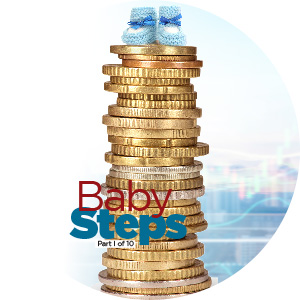Baby Steps: Part 3 of 10
| May 11, 2021"I feel like we’re on a mission together, and it just got real”
January 2016
Nat was quiet for what felt like an eternity. “What do I think? I think we can work out a compromise,” he said. I smiled. My husband — the eternal diplomat.
“It’s still the first week in January,” Nat continued, “Let’s make a budget for this month and see how it goes. Then we can revisit Dave Ramsey and the Baby Steps at the end of the month.”
“Deal,” I said. “Want to work on the budget now?”
“I’ll make us some tea and meet you at the dining room table. We’ll get it done together,” Nat said, moving toward the kitchen.
I dipped into the pantry to pull out a couple of muffins then sat at the table and pulled out my laptop, thankful for my husband, for good advice, and for the Hashgacha pratis that led me to finding Dave Ramsey’s audiobook. Nat soon joined me with two steaming mugs, and we had the first of what would become our monthly budgeting dates — hot drinks, sweet pastry, and a look at our income and expenses for the month ahead. Romantic, no?
I’m excited to start this journey with my husband, I thought. Still, I hope I’ll be expecting soon and that this get-out-of-debt plan will have to be put on hold in order to save for baby gear.
Four weeks later, Nat and I sat next to each other at the dining room table again, with the credit card, a pair of scissors, and my laptop in front of us. We exchanged nervous glances.
“Are you sure you want to do this?” Nat asked. “We can wait another month.”
“I’m sure,” I replied, trying to sound more confident than I felt.
Oops! We could not locate your form.


